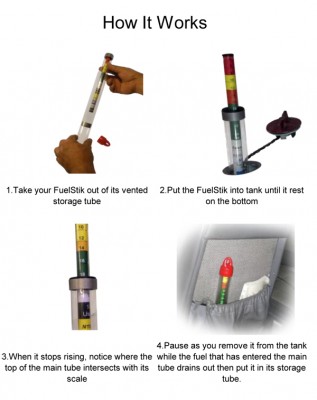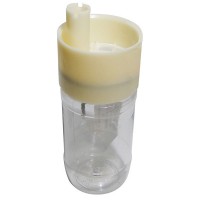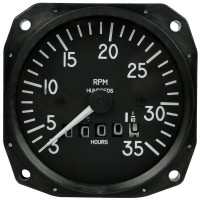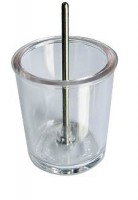FuelStick Piper PA 28 200-235B, 24 Gal
| Description | Usable Fuel Tank Size | Part Number |
|---|---|---|
| Piper PA 28 200-235B | 24 Gal. | 05-12359 |
Overview
|
Extremely light, high impact plastic tubing with aluminum rings resist damage. Available "Aircraft Specific Scales" can be downloaded and printed from the website. Can easily be calibrated to any tank using the "Universal" scale. A worksheet, written instructions, and even an instructional video are available at the website. Its shipping tube doubles as a "Vented Storage Tube". This allows any remaining fuel to evaporate between uses, provides a protection for the life of the unit and reduces manufacturing waste. Its design gives consistent readings even when the fuel in the tank is sloshing around. Its upper and lower rings aide in handling. Large Easy-to-Read numbers observed outside the tank. Quantities given in both Gallons and Pounds! Color coded sections represent approx. 1/3 cruise consumption. Its not limited to your aircraft. Works in tractors, small motors, etc. Will not fall into fuel tank on most aircraft. 100% Made in the USA  |
WARNING: Cancer and Reproductive Harm - www.P65Warnings.ca.gov. |
Specifications
- Device Size: 10-3/4 in (273 mm) x 1-1/4 in (32mm)
- Shipping Tube Size: 12-5/8 in (320 mm) x 1-1/2 in (38 mm)
- Device Weight: 38g Device Only
- Complete Weight: 82g with shipping tube / documents
- Construction: Fuel Resistant Plastic, Aluminum
Documents
- Calculator Worksheet (PDF)
- Calibration Instructions (PDF)
Videos


Reviews
I love this!
Works as stated in our Piper 180!
This is a great product. Simple and ingenious.
Works perfectly!
Nice piece of equipment for measuring near full loads. But most Seneca owners leave the tanks at 80 and this gauge wont work below 43 due to the way the tanks are situated. This is a design characteristic, not the fault of the fuel stick. Any fuel above 43, like for a trip, its a good piece of gear. I like it.
Verified the accuracy of the readings and was spot on ! Good to have in your tool bag.
Good idea but I filled my tanks with 6 gal each and shower 10 gal. You can access the scale which is simply paper rolled into a sealed tube and push it where it reads correctly. The problem with that is it can easily get bumped out of calibration when slid into its storage container.
Completely unusable! I thought the first one sent was malfunctioning so aircraft spruce sent me a replacement. The second unit performed as poorly as the first one. When I called the manufacturer, I was told by the designer that it would be best if I calibrated it myself. Why didn’t I just use a paint stick in the first place if that is the case?!? I would not recommend this product to anyone, especially since your life may depend on it!
Very dangerous product, mine broke while measuring and left many little plastic parts inside the tank... a real mess!
Q&A
Please note, Aircraft Spruce's personnel are not certified aircraft mechanics and can only provide general support and ideas, which should not be relied upon or implemented in lieu of consulting an A&P or other qualified technician. Aircraft Spruce assumes no responsibility or liability for any issue or problem which may arise from any repair, modification or other work done from this knowledge base. Any product eligibility information provided here is based on general application guides and we recommend always referring to your specific aircraft parts manual, the parts manufacturer or consulting with a qualified mechanic.













 FREE Shipping
FREE Shipping





